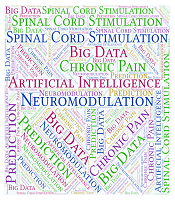Dear editor,
The concept of big data, defined as information assemblages characterized by complexity and massive size, is not new. Approximately 7,000 years ago in Mesopotamia, big data and accounting were used to record the growth of crops and herds. Many years later, during the Cold War, more than 12,000 cryptologists working in the National Security Agency (in the United States) were confronted with an information overload as they started collecting and processing intelligence signals automatically (1).
However, one of the most outstanding areas is healthcare, where big data analytics is making immense changes. Undoubtedly, for years gathering huge amounts of medical data has been an expensive, time-consuming process. But today’s always-improving technologies can help us collect such data and convert them into clinically relevant insights that, in turn, are used to provide better care (2). Some examples are as follows:
Smart staffing and training: Analyze admission records, recognize patterns in admission rates, predict future admission trends, plan resource (staff) allocation, adequately train the staff (soft skills as well).
Electronic health records: A digital patient record can achieve savings from reduced hospital/office visits and tests, for example, by preventing unnecessary emergency room (ER) visits.
Real-time alerting: Collecting information from patients’ wearables, a system can immediately inform physicians about needed action (patients with blood pressure or dyspnea problems).
Patient engagement: Identification of potential health risks lurking.
Prevention of opioid abuse: Prediction of whether someone is at risk for opioid abuse.
Prevention of suicides: Based on questionnaires, predictive algorithms can identify individuals at risk.
Cancer therapy: The use of data on treatment plans and recovery rates to find trends and treatments that have the highest rates of success.
Prevention of security threats: Prevention of patient data breach by identifying changes in network traffic.
Telemedicine: Delivery of remote clinical services, prediction of acute medical events in advance, reduction of hospitalization costs, improvement of availability of care.
Medical imaging: Algorithms can analyze hundreds of thousands of images, identify specific patterns, and help physicians to diagnose.
In the healthcare literature, three main categories of studies associated with big data are identified, including omics (genomics, metabolomics, and proteomics), medical specialties (neurology, imaging, and immunology), and public health (bioinformatics, electronic health records, and epidemiology) (3). Five big challenges (often described as the ”5Vs”) are reported in the published articles (4, 5):
Volume: Size (terabytes, petabytes, and exabytes).
Variety: Various sources (text, numbers, images, signals, sound, etc.) and unstructured data not suitable for analysis using conventional database techniques.
Velocity: High frequency of data generation, delivery, and process.
Veracity: Validation of the data is difficult.
Valorization: Assigning a value to the data is difficult.
Additional challenges that scientists face (3):
Statistical and computational methods: Changes in methods for data collection and analysis are needed; visualization methods are also required.
Extracting meaningful information: Eliminating the “noise”, minimizing erroneous data, and meaningfully interpreting them.
Information access: Facilitating data sharing and collaborating with scientists.
Lack of experience: Very few scientists who can combine analytic and clinical knowledge.
Data reuse: Collected data can help us (later) answer questions that have not been arisen yet.
Drawing false conclusions: Big size is not enough; we should also know the context in which data were collected.
Privacy issues: Even if data are pseudonymized or anonymized, they retain a small reidentification risk.
Patients suffering from chronic pain constitute a big part of the healthcare system. Chronic pain is indeed serious health and socioeconomic issue affecting not only individuals but the whole society as well. Although a common definition of pain is not always present, many studies have reported a prevalence of 25 - 35%, in some countries (France, Italy) even exceeding 40% (6). The situation is even worse for cancer patients who experience chronic pain with a prevalence of 50 - 80% (7).
Pain is a complicated disease because various factors are associated with its development (physical, psychological, and social) (8). In this sense, chronic pain should not be seen merely as a symptom but rather as a self-existing entity (9). It is also true that chronic pain is often undertreated. The problem lies in the fact that patient-centered integrated care with multi-professional teams is lacking (10). On the other hand, the measurement of pain per se is highly problematic because of the subjective nature of pain. Till now, researchers could work only with self-reported measurement scales. Many factors included but not limited to the COVID-19 pandemic and the opioid crisis in the United States, have highlighted the inadequacy of such systems and underlined the need for a new approach that could objectively quantify pain (11).
One idea could be to use smartwatches to analyze the movement and rest cycles of patients suffering from chronic pain. In addition, one could collect data on sleep patterns or medication usage. Based on these big data, scientists could use, as a second step, artificial intelligence (AI) algorithms to accurately measure pain, eliminating (hopefully) to accurately measure pain eliminating any potential bias. This could also help pain physicians assess the efficacy of various pain treatments (pulsed radiofrequency, spinal cord stimulation, and intrathecal drug administration) or of different aspects of the same pain treatment (various stimulation waveforms in the context of spinal cord stimulation therapy, which patients will respond better to tonic stimulation and which to burst high frequency or combination therapy?).
Over the next years, data-centric approaches will try to discover patterns and make clinical predictions (12). An example could be the prediction of low back pain (13). Nevertheless, to turn such predictions into reality, the biggest obstacle standing in the way is how medical data is spread across many sources governed by different countries, hospitals, and administrative authorities. The desired integration of these data sources requires developing a new infrastructure where all data providers collaborate with each other (2). Moreover, this is of utmost importance in chronic pain management. Exciting times lie ahead. Let´s get prepared!

